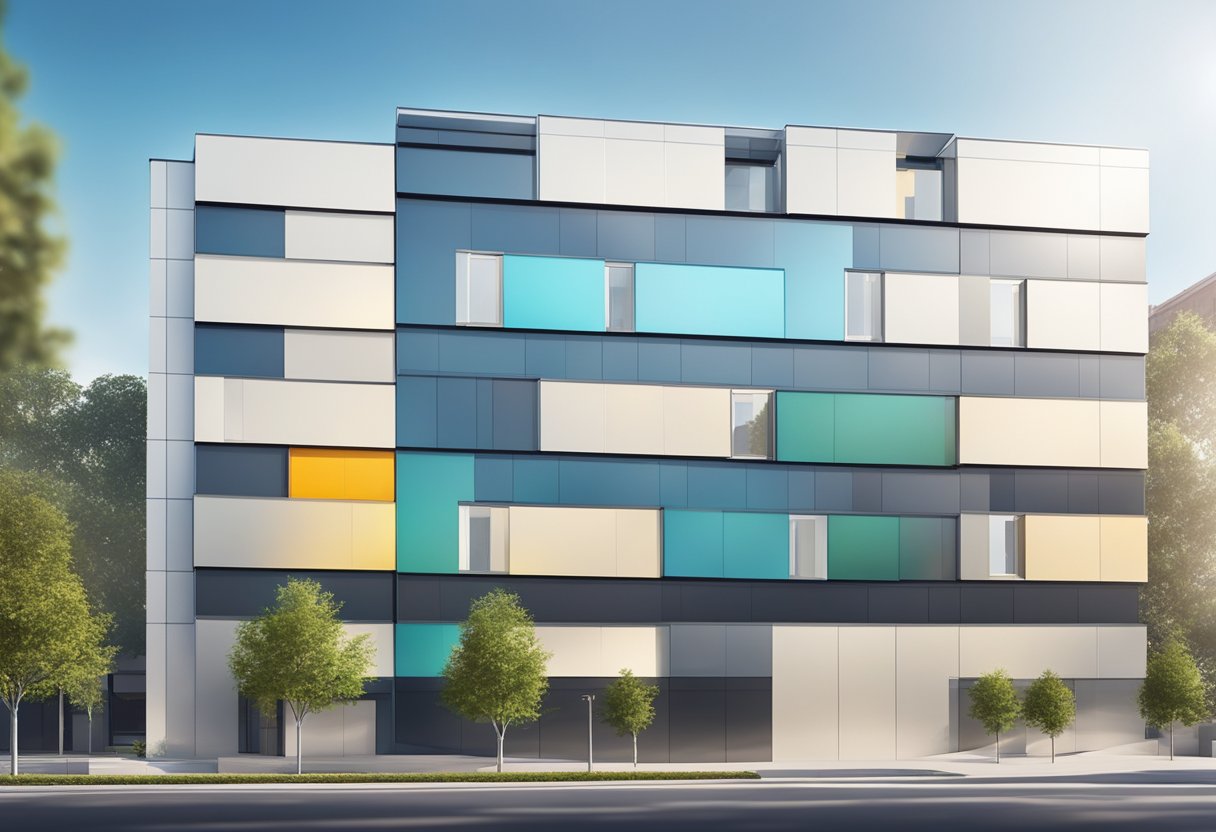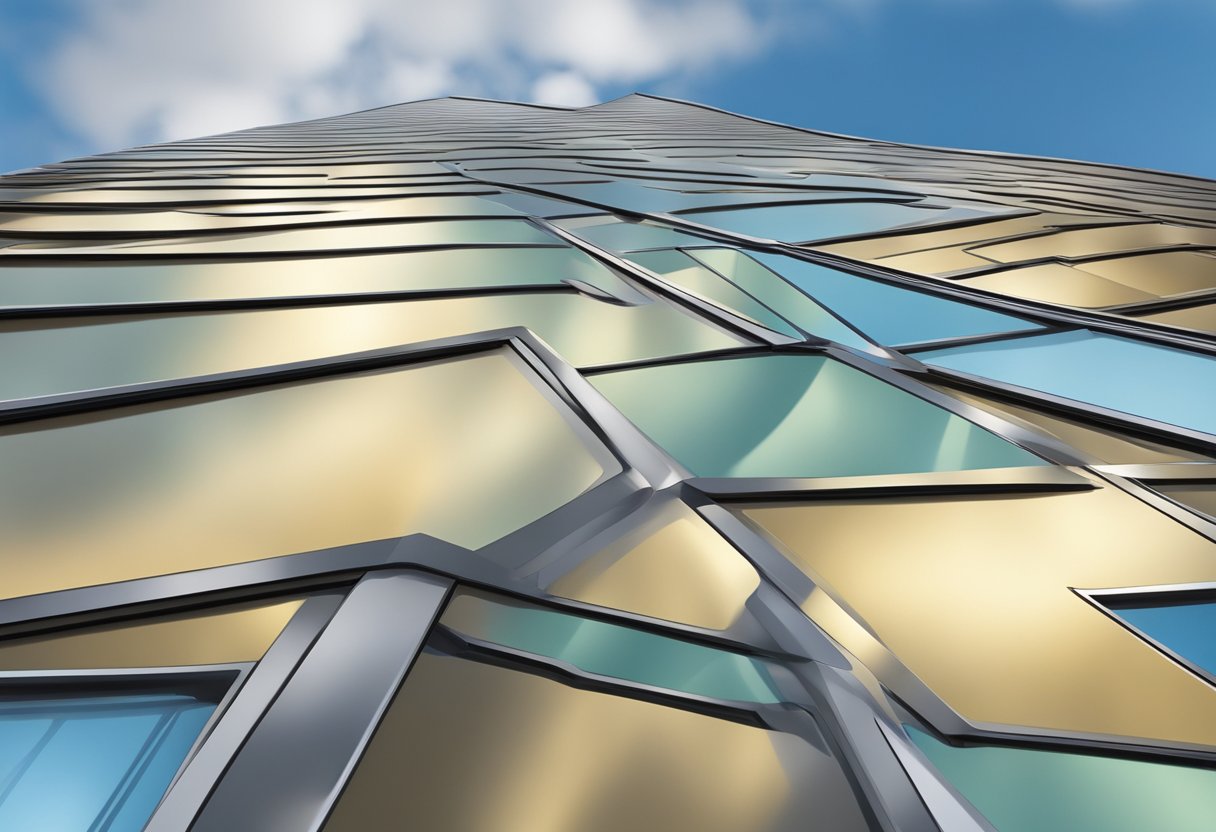Aluminum composite panel Alucobond is a popular building material that has gained widespread use in modern architecture. It is made up of two aluminum sheets that are bonded together with a core material, typically polyethylene, to create a lightweight and durable panel. Alucobond panels are known for their versatility and aesthetic appeal, making them a popular choice for both commercial and residential buildings.

One of the key benefits of Alucobond panels is their ability to be customized to fit a wide range of design needs. They come in a variety of colors, finishes, and textures, making them a versatile choice for architects and designers. Additionally, Alucobond panels are easy to install and require minimal maintenance, making them a cost-effective option for building owners.
Overall, the use of aluminum composite panel Alucobond has revolutionized the building industry, providing a durable and customizable material that meets the needs of modern architecture. As more and more buildings are constructed using this material, it is clear that Alucobond panels will continue to play an important role in the future of building design.
Composition and Properties

Core Materials
Alucobond is a composite panel made up of two aluminum sheets bonded to a thermoplastic core material. The core is typically made of polyethylene, a lightweight and durable plastic material. The thickness of the core can vary depending on the desired strength and rigidity of the panel. Alucobond panels are available in a range of core thicknesses, from 3mm to 6mm.
Surface Coatings
The aluminum sheets on either side of the core are coated with a paint finish or a metallic finish. The paint finish is typically a high-quality polyester coating that is applied using a coil-coating process. This process ensures a consistent and durable finish that resists fading, chalking, and peeling. The metallic finish is achieved using a process called anodizing, which creates a protective oxide layer on the surface of the aluminum. This layer can be tinted to achieve a range of metallic colors.
Alucobond panels are known for their excellent weather resistance, fire resistance, and durability. They are lightweight and easy to install, making them a popular choice for architectural cladding and signage. The panels can be cut and shaped to create custom designs, and they are available in a range of sizes and colors.
In summary, Alucobond is a composite panel made up of two aluminum sheets bonded to a thermoplastic core. The panels are available in a range of core thicknesses and surface finishes, including paint and metallic coatings. Alucobond panels are known for their excellent weather resistance, fire resistance, and durability, making them a popular choice for architectural cladding and signage.
Manufacturing Process
Aluminum composite panel Alucobond is manufactured through a continuous lamination process. The process involves bonding two thin aluminum sheets to a non-aluminum core, resulting in a lightweight yet sturdy panel.
The first step in the manufacturing process is the preparation of the aluminum sheets. The sheets are cleaned and chemically treated to ensure proper adhesion to the core material. The core material, which is typically made of polyethylene or mineral-filled core, is then fed into the lamination machine.
The aluminum sheets are then fed into the machine and bonded to the core material under high pressure and temperature. The result is a flat panel with a smooth surface and uniform thickness. The panel can be customized to different colors, finishes, and sizes to meet specific project requirements.
Alucobond panels are known for their durability, weather resistance, and low maintenance. The manufacturing process ensures that the panels are free from defects and have consistent quality. The panels are also eco-friendly as they are made from recyclable materials and have a long lifespan.
Overall, the manufacturing process of aluminum composite panel Alucobond is a complex yet efficient process that produces high-quality panels suitable for a wide range of applications.
Applications
Architectural Cladding
Aluminum composite panels have become a popular choice for architectural cladding due to their durability, flexibility, and aesthetic appeal. They are commonly used for exterior facades of buildings, as well as interior walls and ceilings. Alucobond, one of the most well-known brands of aluminum composite panels, offers a wide range of colors and finishes to suit any design style.
Architectural cladding made from aluminum composite panels provides a sleek and modern look to buildings, while also providing protection against the elements. The panels are lightweight and easy to install, making them a cost-effective option for large-scale projects. Additionally, they are low maintenance and can withstand harsh weather conditions, making them a durable choice for long-term use.
Signage and Displays
Alucobond panels are also commonly used for signage and displays. The panels offer a smooth surface that can be easily printed or painted with graphics or text. They can be cut to any size or shape, making them a versatile option for a variety of signage needs.
In addition to their visual appeal, aluminum composite panels are also fire-resistant and have excellent weather resistance, making them a safe and durable choice for outdoor signage. They are also lightweight and easy to install, making them a cost-effective option for businesses and organizations looking to create eye-catching signage and displays.
Overall, aluminum composite panels offer a range of applications for both architectural and signage needs. With their versatility, durability, and aesthetic appeal, they are a popular choice for a variety of projects.
Installation Techniques
Aluminum Composite Panels (ACP) are lightweight, durable, and easy to install. Alucobond is one of the most popular brands of ACP, and it is widely used in construction projects around the world. Here are some installation techniques for Alucobond:
1. Preparation
Before installing Alucobond, it is important to prepare the surface. The surface should be clean, dry, and free of any debris or contaminants. If the surface is not properly prepared, the adhesive may not bond properly, which can lead to problems down the line.
2. Cutting
Alucobond can be cut using a variety of tools, including saws, routers, and shears. It is important to use the proper tool for the job, as using the wrong tool can damage the material and affect the final result. When cutting Alucobond, it is important to wear protective gear, such as gloves and safety glasses.
3. Fastening
Alucobond can be fastened to the surface using a variety of methods, including screws, rivets, and adhesives. The method used will depend on the specific project and the preferences of the installer. It is important to follow the manufacturer’s instructions when fastening Alucobond, as using the wrong method can affect the integrity of the installation.
4. Finishing
Once the Alucobond panels are installed, it is important to finish the edges and joints properly. This can be done using a variety of techniques, including caulking and painting. It is important to ensure that the finish is properly applied, as this can affect the appearance and durability of the installation.
Overall, Alucobond is a versatile and easy-to-install material that is ideal for a wide range of construction projects. By following these installation techniques, installers can ensure a successful and long-lasting installation.
Maintenance and Durability
Aluminum composite panel Alucobond is known for its durability and low maintenance requirements. The panels are made of two aluminum sheets bonded to a polyethylene core, which provides excellent strength and weather resistance.
One of the main advantages of Alucobond is its resistance to corrosion. The aluminum sheets are coated with a protective layer that prevents rust and other forms of corrosion from forming. This makes Alucobond ideal for use in areas with high humidity or saltwater exposure, such as coastal regions.
In terms of maintenance, Alucobond requires minimal upkeep. The panels can be easily cleaned with soap and water, and do not require any special cleaning products or equipment. However, it is important to avoid abrasive or acidic cleaners, as these can damage the protective coating and reduce the lifespan of the panels.
Alucobond is also highly resistant to fading and weathering. The panels are designed to withstand exposure to UV rays and extreme temperatures, which can cause other materials to degrade over time. This makes Alucobond a popular choice for outdoor applications, such as building facades and signage.
Overall, the durability and low maintenance requirements of Alucobond make it a cost-effective choice for a wide range of applications. Its resistance to corrosion, fading, and weathering ensures that it will continue to look great for years to come.



